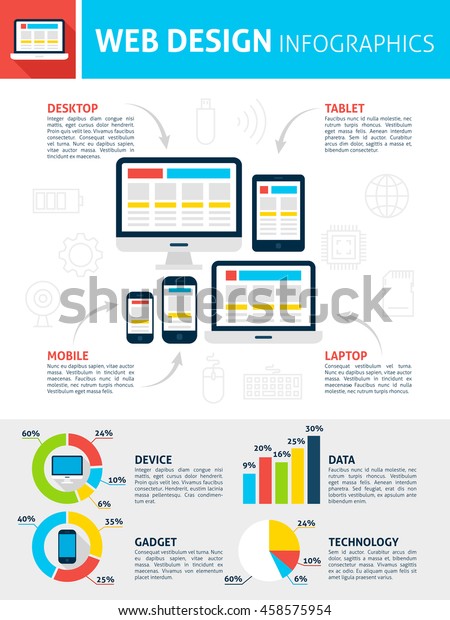Intrigued In Finding Out Just How Internet Site Layout Has Transformed Over The Years? Check Out The Development From Basic, Straightforward Styles To User-Centered Methods That Focus On The Demands And Choices Of On The Internet Site Visitors
Intrigued In Finding Out Just How Internet Site Layout Has Transformed Over The Years? Check Out The Development From Basic, Straightforward Styles To User-Centered Methods That Focus On The Demands And Choices Of On The Internet Site Visitors
Blog Article
Author-Dalrymple Cantu
In the past, web sites were easy and concentrated on info. Navigating was straight, and style was for desktops. Now, individual experience is key. Information guides styles for easy navigation. Receptive formats fit various devices. Today, dark mode reduces stress, and minimal menus improve navigating. Interactive attributes engage individuals, and vibrant visuals stand out. AI combination increases involvement. See exactly how style has evolved to enhance your online trip.
Very Early Days of Website Design
In the very early days of web design, simpleness reigned supreme. Internet sites were fundamental, with limited shades, fonts, and formats. The focus got on giving information rather than fancy visuals. Users accessed the net via sluggish dial-up connections, so rate and performance were essential.
Navigation menus were straightforward, generally located on top or side of the web page. https://search-engine-optimizatio17384.blogdanica.com/29791509/becoming-efficient-in-social-media-site-advertising-and-marketing-suggestions-and-techniques-for-achieving-success were designed for home computer, as mobile surfing wasn't yet widespread. Material was king, and developers prioritized easy readability over complicated layout components.
HTML was the primary coding language made use of, and developers needed to function within its constraints. Computer animations and interactive features were minimal compared to today's requirements. Internet sites were static, with little vibrant content or customized individual experiences.
Surge of User-Focused Layout
With the evolution of website layout, a shift in the direction of user-focused design concepts has actually become progressively popular. visit my homepage , creating sites that focus on individual experience is vital for involving site visitors and achieving business goals. User-focused design involves understanding the requirements, preferences, and actions of your target audience to tailor the internet site's layout, web content, and includes appropriately.
Designers now perform extensive study, such as user surveys and usability testing, to collect insights and feedback straight from users. This data-driven approach assists in producing intuitive navigating, clear calls-to-action, and visually attractive interfaces that resonate with visitors. By positioning the customer at the facility of the design process, internet sites can provide a more personalized and satisfying experience.
Receptive layout has actually also become an essential element of user-focused design, making sure that sites are maximized for different tools and screen dimensions. This versatility boosts availability and use, dealing with the diverse ways individuals connect with sites today. Essentially, the increase of user-focused layout signifies a change towards developing electronic experiences that prioritize the demands and assumptions of completion customer.
Modern Trends in Web Design
Explore the most recent fads forming website design today. One noticeable fad is dark mode design, providing a sleek and modern appearance while reducing eye strain in low-light environments. An additional crucial pattern is minimalist navigation, simplifying food selections and improving individual experience by concentrating on essential elements. Incorporating micro-interactions, such as computer animated buttons or scrolling results, can create a more appealing and interactive site. Receptive style continues to be essential, making certain smooth individual experiences across various devices. Furthermore, making use of strong typography and asymmetrical formats can include aesthetic rate of interest and draw attention to specific material.
Integrating AI technology, like chatbots for customer support or personalized referrals, enhances customer engagement and streamlines processes. Availability has also come to be a significant trend, with developers prioritizing inclusive design methods to accommodate varied individual needs. Welcoming sustainability by optimizing website performance for speed and performance is one more emerging fad in website design. Collaborating with user feedback and data analytics to iterate and enhance design continuously is vital for staying relevant in the ever-evolving digital landscape. By embracing these modern-day patterns, you can develop a visually enticing, user-friendly website that reverberates with your audience.
Verdict
As you reflect on the advancement of web site design from the early days to currently, you can see exactly how user-focused style has actually come to be the driving force behind contemporary fads.
Welcome the trip of change and adjustment in website design, constantly maintaining the individual experience at the forefront.
Remain existing with the most recent patterns and technologies, and never stop evolving your strategy to create aesthetically spectacular and easy to use internet sites.
Evolve, adapt, and develop - the future of web design remains in your hands.
